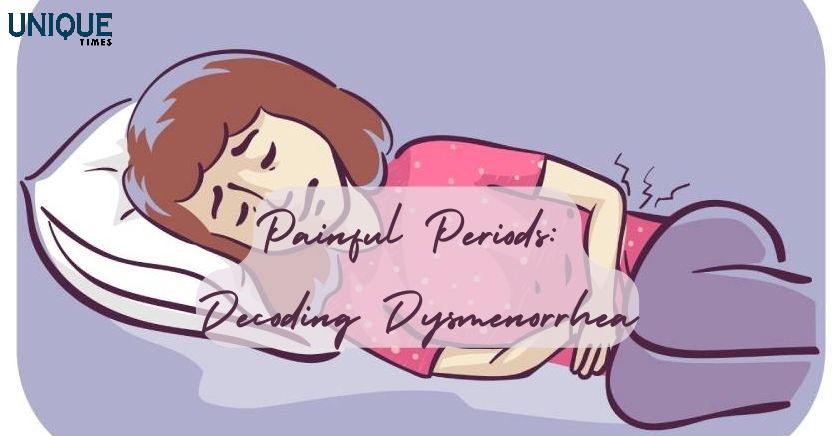Decoding Dysmenorrhea: Understanding the Painful Truth About Menstrual Cramps

For many women, menstruation is a monthly occurrence accompanied by various symptoms, and for some, it includes the unwelcome visitor of menstrual cramps. In this blog, we unravel the mystery of dysmenorrhea, exploring what it is, why it happens, and ways to manage the discomfort associated with this common menstrual issue.
- Defining Dysmenorrhea: The Basics of Menstrual Cramps Begin by understanding the term itself. Dysmenorrhea refers to the medical condition of experiencing pain and discomfort before or during menstruation. While it’s a common occurrence, the severity of symptoms can vary from mild to debilitating.
- Primary Dysmenorrhea: Unraveling the Natural Process Primary dysmenorrhea is the most common type and is not associated with any other medical condition. It typically starts 1-2 days before menstruation and may last from 2 to 4 days. The pain is often centered in the lower abdomen and is caused by the uterus contracting to shed its lining.
- Secondary Dysmenorrhea: When Pain Points to Underlying Issues Unlike primary dysmenorrhea, secondary dysmenorrhea is associated with an underlying reproductive health issue, such as endometriosis or pelvic inflammatory disease. Identifying and addressing the root cause is crucial for managing the pain effectively.
- Common Symptoms: Recognizing the Signs Menstrual cramps can manifest in various ways. Understanding the common symptoms, such as throbbing or cramping pain in the lower abdomen, lower back pain, and sometimes nausea, can help in differentiating dysmenorrhea from other conditions.
- Causes and Triggers: Unraveling the Origins of Pain Explore the factors that contribute to the development of dysmenorrhea. From hormonal fluctuations and prostaglandin release to lifestyle factors like stress and inadequate exercise, understanding the causes can guide effective management strategies.
- Managing Menstrual Cramps: From Home Remedies to Medical Options Discover a range of strategies for managing menstrual cramps, from tried-and-true home remedies like heat therapy and herbal teas to over-the-counter pain relievers and, in severe cases, prescription medications.
- Lifestyle Changes: Nurturing a Healthier Menstrual Cycle Adopting lifestyle changes can play a significant role in minimizing the impact of dysmenorrhea. Explore the benefits of regular exercise, a balanced diet, stress management, and adequate hydration in promoting a healthier menstrual cycle.
- When to Seek Medical Attention: Recognizing Red Flags While menstrual cramps are common, certain signs may indicate a need for medical attention. Learn to recognize red flags, including severe pain, abnormal bleeding, or worsening symptoms, and understand when it’s essential to consult a healthcare professional.
Conclusion: Dysmenorrhea may be a common aspect of the menstrual cycle, but it doesn’t have to be an insurmountable challenge. By understanding the types, causes, and effective management strategies, women can navigate their menstrual cycles with greater ease and find relief from the discomfort associated with menstrual cramps.








